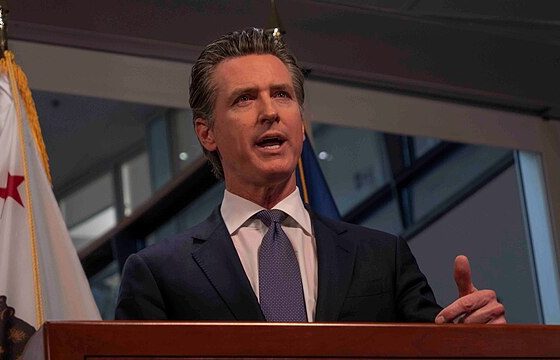President Joe Biden’s signature bills have unlocked more than $1.5 trillion for climate and infrastructure programs, but only a small slice of that funding has been spent, Politico reported Wednesday.
The American Rescue Plan (ARP), the 2021 bipartisan infrastructure law, the CHIPS Act and the Inflation Reduction Act (IRA) have opened up huge amounts of public funds to advance Biden’s domestic agenda, about $215 billion or less is out the door, according to Politico. The large amount of funding remaining on the table not only complicates Biden’s effort to secure a legacy as a transformational president, but also demonstrates the inefficiencies of relying on federal spending to drive broad economic activity, according to economists who spoke with the Daily Caller News Foundation.
“The Biden administration has an idea of being the next FDR administration,” David Ditch, a senior policy analyst at the Heritage Foundation, told the DCNF. “And the administration has decided to layer massive amounts of mandates and red tape on programs that ought to be fairly straightforward. So, you can’t just have a port infrastructure program or a rail program. If you’re applying for these grants, you also need to say how you’re addressing what they call environmental justice, or climate change, or diversity, equity and inclusion, for example.”
Cumulatively, the four bills have made about $1.6 trillion available for climate and infrastructure initiatives, and the spending is central to Biden’s reelection pitch that he is reviving American infrastructure while addressing climate change, according to Politico. An estimated $551 billion of that government spending is expected to take the shape of tax credits for things like electric vehicles (EVs) and green energy manufacturing, while $1.1 trillion is available for the government to spend on things like highways and computer chip manufacturing.
“The main theme of Biden’s spending here is federal ‘crowding out,’ or displacement, of activities that state and local governments and private sector are already doing, or should be doing, for themselves. The federal money is wasteful duplication,” Chris Edwards, the chair of fiscal studies at the Cato Institute, told the DCNF. “EV charging stations are a classic example. America already had tens of thousands of stations provided by Elon Musk and others before the federal law. There was no need for federal subsidies.”
The Biden administration has $7.5 billion available from the bipartisan infrastructure law to subsidize the creation of a national EV charging network, but the program has so far only managed to produce a handful of operational charging stations around the country.
“The CHIPS semiconductor money is displacing private investment and private venture capital, and the infrastructure law is displacing state funding of state infrastructure,” Edwards continued. “That just increases waste and adds to federal deficits for no good reason.”
Only $125 billion of the combined $1.1 trillion has been spent, and the administration has announced an additional $89 billion of spending, though it is unclear how much of that money is out the door, Politico reported. At least some of the unspent funds could be on the chopping block if former President Donald Trump returns to the White House in January 2025.
The IRA opened up $145 billion for direct spending on climate change, but the administration had only announced tentative plans to spend $60 billion as of early April, according to Politico. Less than $700 million from the CHIPS Act’s $54 billion has been shelled out, but the Department of Commerce has announced tentative plans to award $29 billion from the law.
The IRA also contains numerous types of green tax credits and incentives, which may ultimately balloon to a cumulative cost exceeding $1 trillion, according to an April 2023 analysis by Goldman Sachs.
Only about $125 billion from the ARP and infrastructure package, which cumulatively provide about $884 billion, have been spent, Politico reported. However, the administration is not legally permitted to spend $300 billion from those two bills until the two upcoming fiscal years.
Much of the money available for some of the most important Biden infrastructure programs remains unspent, according to Politico. For example, less than $60 billion of the more than $300 billion available for highway planning and construction has been spent, about $29 billion of the $30 billion available for the drinking water state revolving fund remains unspent and about $2 billion of a $20 billion public transit improvement grant program has been awarded.
While the president has tried to emulate the transformative presidency of former President Franklin Delano Roosevelt, at least 24% of voters have not heard or read anything about each of Biden’s major spending bills, according to the results of a Politico-Morning Consult poll conducted in late April.
Biden hung Roosevelt’s portrait over the fireplace of the Oval Office shortly after taking office in 2021, Politico reported. Roosevelt has long been hailed as a Democratic icon and a transformational president by admirers, though some critics have charged that his New Deal response to the Great Depression actually prolonged the economic crisis.
The climate and infrastructure spending have also featured in Biden’s reelection messaging to date, indicating that the president and his team will lean on those aspects of his first term’s agenda in hopes of landing a second term.
If Biden’s infrastructure and climate spending are to make a transformative economic impact, they have not yet done so, as inflation and interest rates remain high amid lower growth and shaky consumer confidence. Voters have consistently identified the economy and inflation as crucial issues facing the country, while climate change tends to rank much lower on the list.
The White House did not respond immediately to a request for comment.












